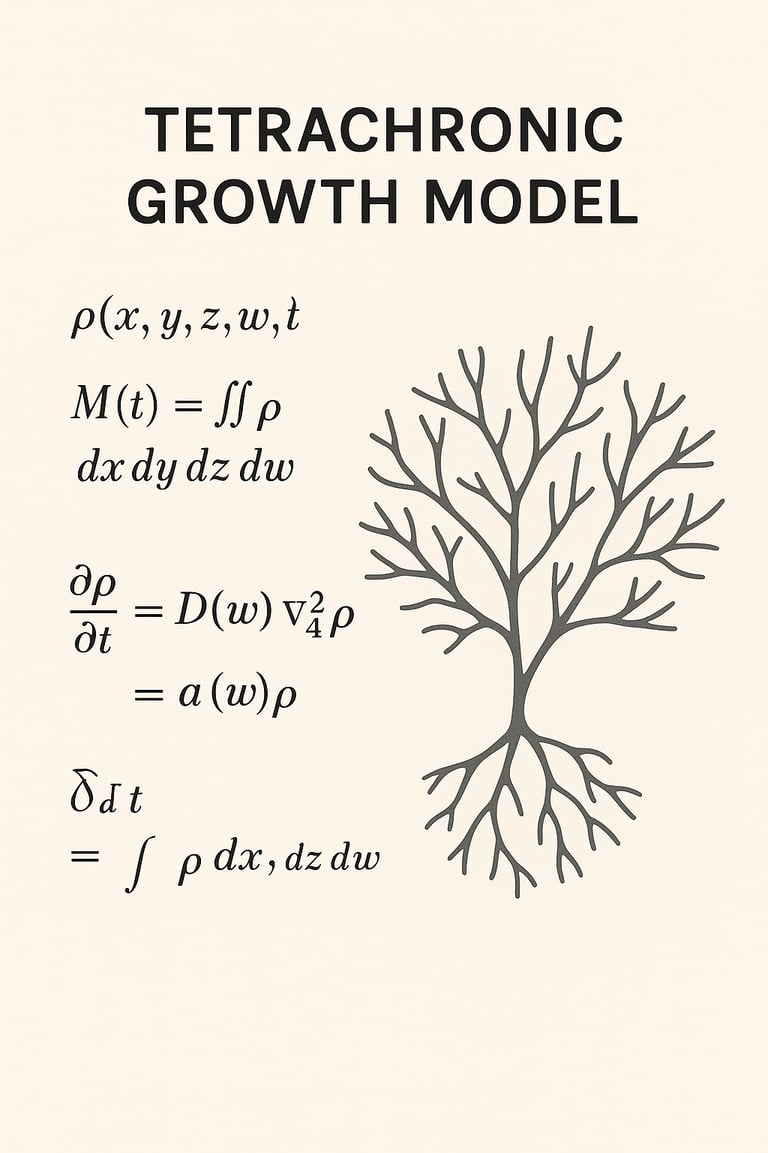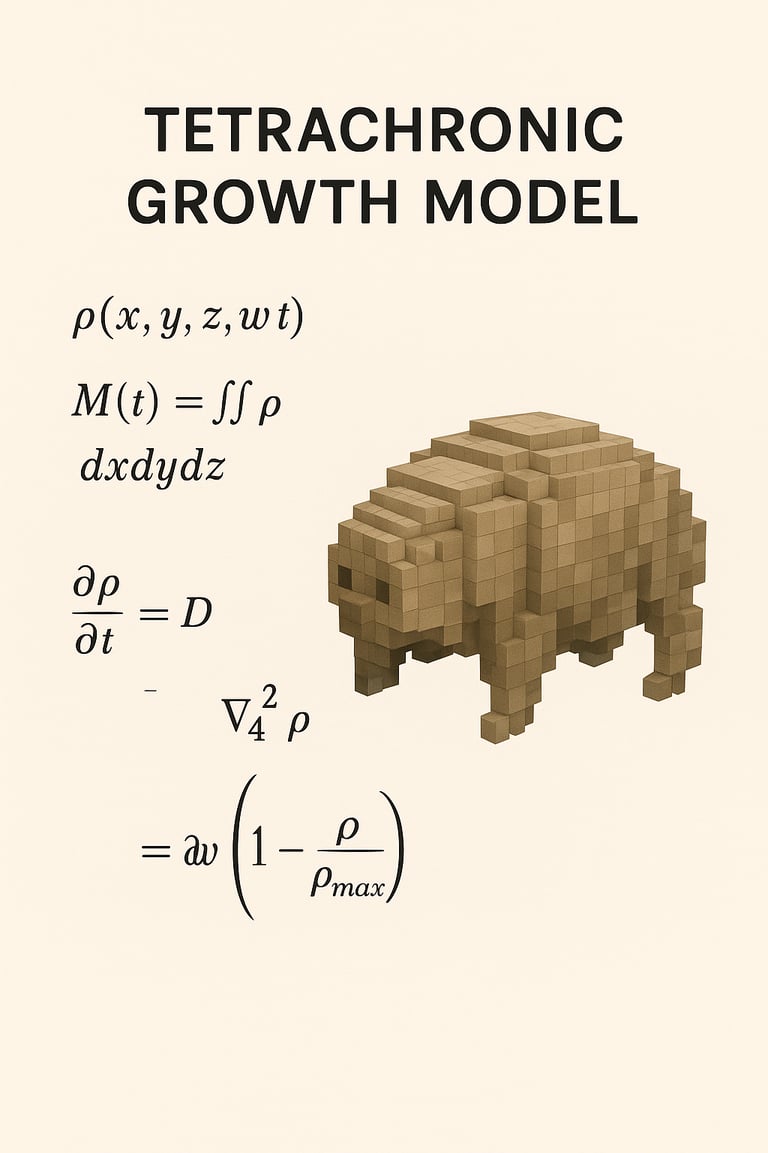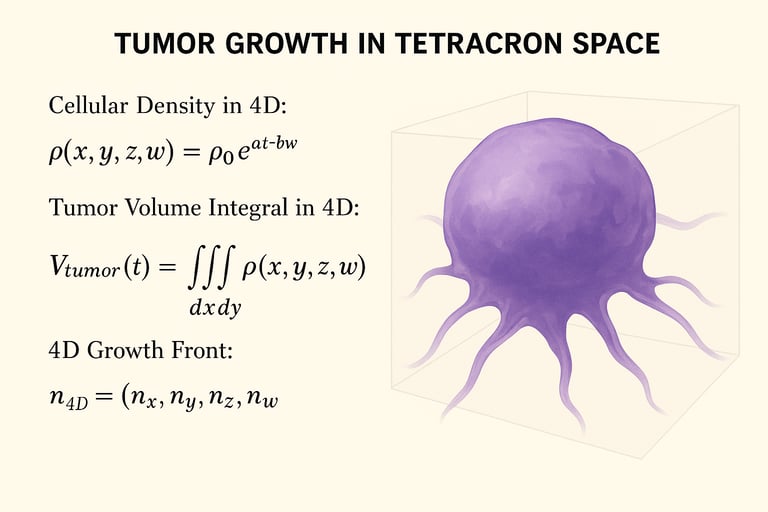1. Why the Tetrachron Principle allows 4D solids to be emulated
The Tetrachron Principle defines a universal constructive rule for generating four-dimensional objects:
Every four-dimensional solid is obtained as the continuous accumulation of three-dimensional volumes along a fourth coordinate w.
This means that mathematicians and computational physicists no longer need to imagine 4D as an abstract entity —
they can simulate it as an integral sequence of 3D volumes.
Each Ew represents a 3D layer, and m4(E) gives its total four-dimensional measure.
This provides a computational and geometric framework to build and measure tetrachrons precisely.
2. Practical applications
Using this principle, a scientist or engineer can:
Model a 4D solid via a function Ew describing the change of 3D shape along w.
Visualize each layer in 3D software (Blender, MATLAB, Mathematica) and project the 4D body.
Compute its total hypervolume directly through integration.



3. Why it’s revolutionary
Traditional 4D mathematics has remained abstract—rooted in analytical theorems (Fubini–Tonelli) or regular polytopes.
The Tetrachron Principle brings a physical and generative interpretation:
The fourth dimension is not a conceptual leap but a continuous process of spatial accumulation.
It allows anyone to:
Construct tetracrons.
Measure them exactly.
Visualize them through 3D sections.
Simulate their real-time growth.
4. What makes it new
The Fubini–Tonelli Theorem ensures the commutativity of integration.
The Tetrachron Principle transforms that analytical property into a law of spatial generation.
It doesn’t merely integrate — it creates space itself.
This conceptual leap defines the Tetrachron as a new foundation for four-dimensional geometry.








Tetrachron
Exploreing the fourth dimension
Book "Tetrachron: The hidden dimension of time and space
$ 50.000
Dimensión
Exploreing geometry of fourth dimension.
Math
space
avcesar58@hotmail.com
© 2025. All rights reserved.